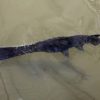Scientists brave enough to grow a spine0
- From Around the Web, Science & Technology
- December 11, 2020
Stem cells self-organise into trunk-like structures.

Stem cells self-organise into trunk-like structures.

Scientists working with the Russian sturgeon and American paddlefish have accidentally created a new hybrid species.

A team of U.S. and U.K. scientists has generated the end-to-end gapless DNA sequence of the human X chromosome.

In new research from the Wake Forest Institute for Regenerative Medicine (WFIRM), scientists have shown that bioengineered uteri supported fertilization, fetal development, and live birth with normal offspring. With further development, this approach may someday provide a regenerative medicine solution for women with the inability to get pregnant due to uterine dysfunctional infertility

A University of Sussex student created a new material that is strong and flexible and decomposes in less than six weeks.

It’s no surprise that using human embryos for biological and medical research comes with many ethical concerns. Correct though it is to proceed with caution in these matters, the fact is that much science would benefit from being able to study human biology more accurately.

An all-Princeton research team has identified bacteria that can detect the speed of flowing fluids.

“This research shows us what’s possible,” said researcher Wei Li.

Even if they’re not quite ready for human patients.



